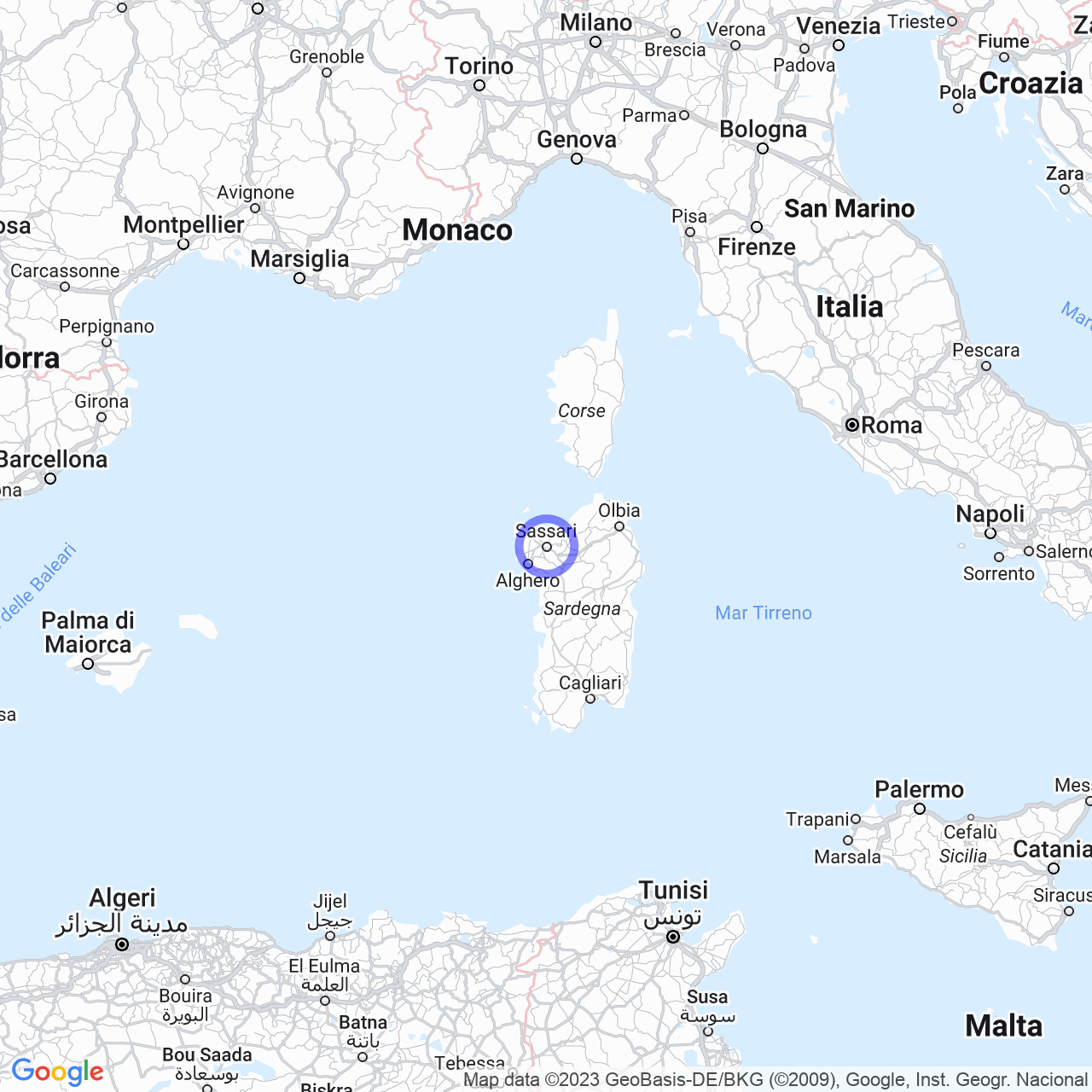Sassari
Sassari: The Largest City in Sardinia
Hello friends! Today I will talk about Sassari, a beautiful Italian city located on the northwestern coast of Sardinia. Sassari is the largest city in Sardinia and the capital of the province of Sassari. The city has a population of over 120,000 inhabitants and is famous for its ancient history, culture, university and natural beauty.
The Physical Geography of Sassari
The territory of Sassari is very extensive and covers an area of 546.08 km². The city is situated on a limestone tableland that slopes towards the Gulf of Asinara and the Nurra plain to the northwest, while to the southeast the terrain is mainly hilly. The urban and suburban territory of Sassari is characterized by valleys and gorges that deeply incise the plateau on which the city is built. The surrounding territory is rich in forests, olive groves, and vegetable cultivations, which offer visitors an incredible panoramic view.

The Climate of Sassari
The climate of Sassari is Mediterranean: winters are mild and humid, while summers are hot and dry. Precipitation is concentrated mainly in the winter months, but the average annual rainfall for the municipal territory is 588.2 mm. Sassari can also experience some sporadic snowfall during the winter months. According to the US magazine Weatherwise, Sassari is considered one of the 10 cities with the most pleasant climate in the world.
Origins of the Name Sassari
The origin of the name Sassari is still a mystery today, but it has been the subject of various academic speculations. The eponymous toponym appears from the middle of the twelfth century in different forms, including ''Sassaris, Sassaro, Sasser, Sacer'' alternated with ''Thathari, Thathar, Táttari'', since the passage ''ss-th'' is not rare in the Sardinian language. According to linguist Massimo Pittau, the name can be translated as "river pebbles" (''sássari, sátzari, sátzeri, perda'e sássari, perda'e sassu, sássinu-a'') from the Proto-Sardinian language, pre-dating the Latin language ''saxum''.
The History of Sassari
Sassari was founded in Roman times as a fortified castle to defend the northern coast of Sardinia. The city was then conquered by the Vandals, the Goths, and the Byzantines. In the twelfth century, Sassari became the capital of the Giudicato of Torres and grew rapidly in terms of power and cultural splendor. In the following centuries, Sassari was subject to several invasions and conquests, including that of the Aragonese, which brought the island into the territory of the Kingdom of Spain.
During the Renaissance, Sassari became enriched in art and culture, becoming an important center of humanism. In the seventeenth century, the city acquired administrative autonomy, and in 1848 the newspaper "L'Unione Sarda" was founded, representing one of the most important voices of the island.
The University of Sassari
Sassari is home to the University of Sassari, which is one of the oldest and most important universities in Italy. The university was founded in 1562 and offers a wide range of courses in different disciplines, from humanities to agriculture and technology.
What to Visit in Sassari
Sassari is a city rich in history, art, and culture. There are many tourist attractions that visitors can visit during their stay. The Cathedral of the Holy Trinity is one of the symbols of the city and dates back to the twelfth century. The Church of Santa Maria di Betlem is another important tourist attraction and dates back to the sixteenth century. The Church of San Francesco is another example of Sardinian Renaissance and Baroque art.
Conclusion
Sassari is a fascinating Italian city that is worth visiting. The city is rich in history and culture and offers visitors a unique experience. If you have the opportunity, I recommend visiting Sassari to discover its wonders and beauty. What do you think about visiting it?
